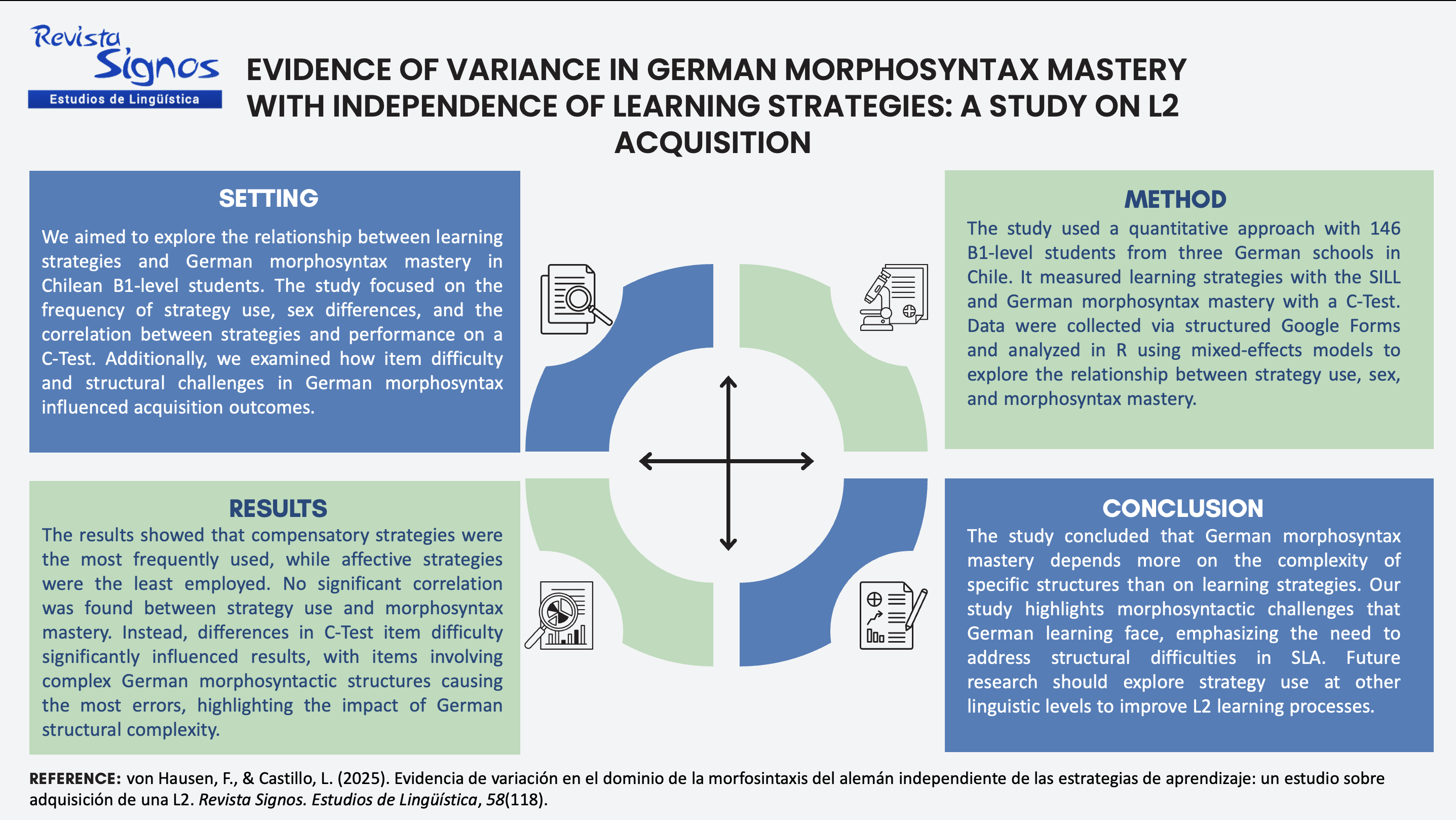Evidence of variation in the mastery of German morphosyntax independent of learning strategies
a study on L2 acquisition
DOI:
https://doi.org/10.4151/S0718-09342025011801168Keywords:
German morphosyntax, L2 learning strategies, second language acquisition, language distance, C-testAbstract
Variation in second language acquisition (L2) has been extensively studied within the context of language teaching, yet less attention has been given to learners themselves and their specific learning processes. We investigated the relationship between German morphosyntax mastery and the use of learning strategies for German as an L2, using version 7 of the Oxford Strategy Inventory of Language Learning (1990, 2003) to measure the use of language learning strategies, and a C-Test by Arras et al. (2002) to assess morphosyntax mastery in 146 third-year secondary school students from three German schools in Chile. Analysis through mixed models revealed that the variability in C-Test items affected participants' results independently of the strategies used. We interpret our results as evidence that the complexity of particular morphosyntactic structures is more relevant for the acquisition of German as an L2 than the use of learning strategies. We discuss these results in the light of differences in the acquisition difficulty of various morphosyntactic structures.

Downloads
Published
How to Cite
Issue
Section
License
Copyright (c) 2025 Revista Signos. Estudios de Lingüística

This work is licensed under a Creative Commons Attribution 4.0 International License.
Copyright agreement:
Authors who have a manuscript accepted for publication in this journal agree to the following terms:
Authors will retain their copyright and grant the journal the right of first publication of their work by means of this copyright agreement document, which is subject to the Creative Commons Acknowledgment License that allows third parties to share the work provided that its author and first publication in this journal are indicated.
Authors may adopt other non-exclusive license agreements for distribution of the published version of the work (e.g., depositing it in an institutional repository or publishing it in a monographic volume) as long as the initial publication in this journal is indicated.
Authors are allowed and encouraged to disseminate their work via the internet (e.g., in institutional publications or on their website) before and during the submission process, which can lead to interesting exchanges and increase citations of the published work (read more here).


